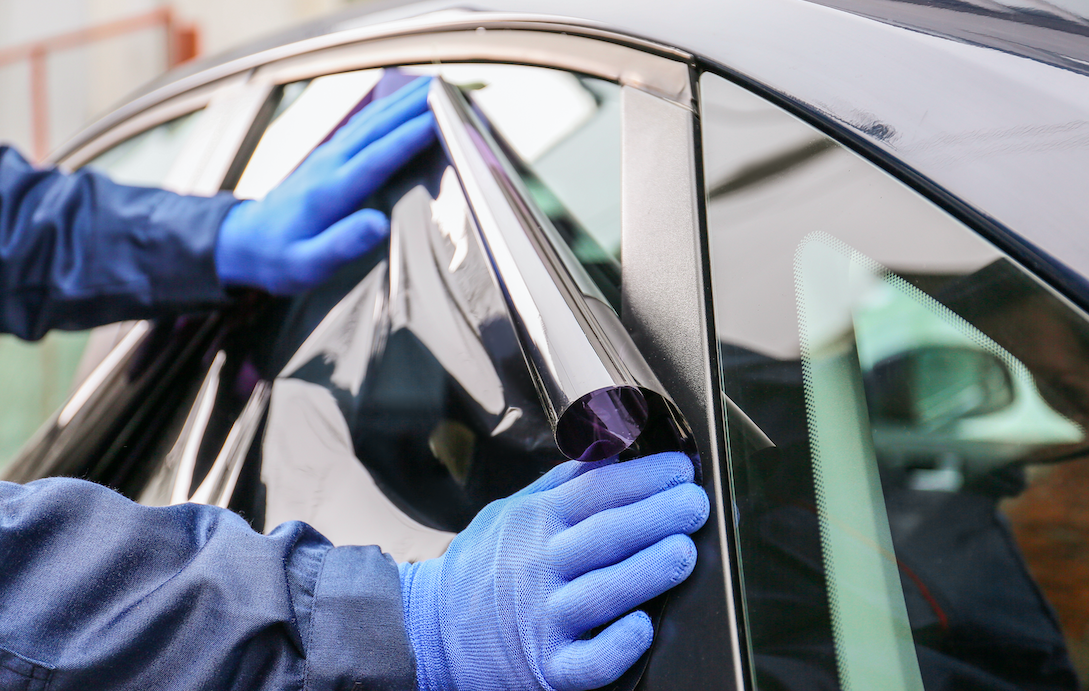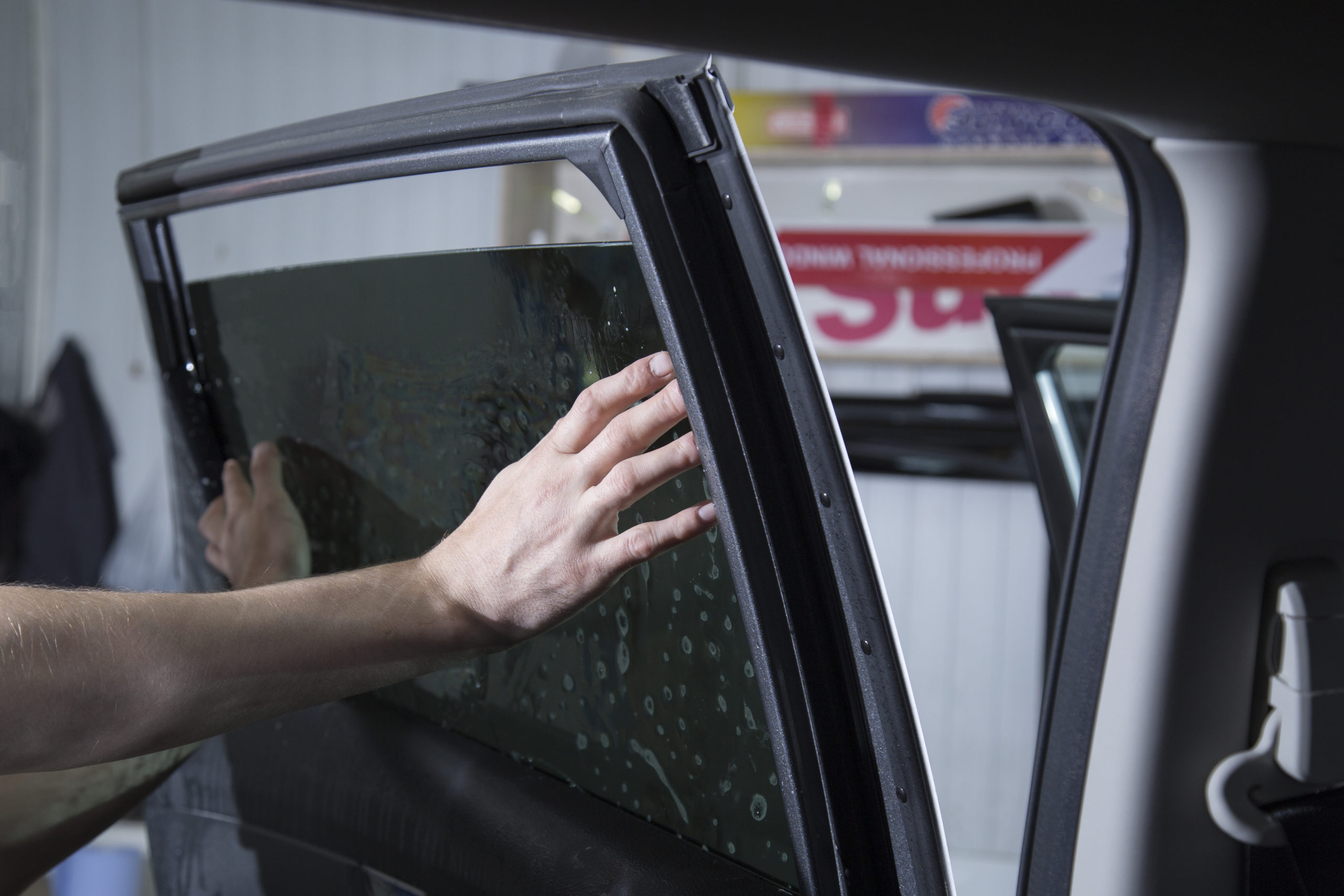Window Tinting Options: Locate the Right Shade for Your Style and Needs
Picking the proper window tint for your vehicle includes a careful consideration of different elements, including individual visual appeals, practical requirements, and lawful restrictions. With alternatives varying from light tintss that provide minimal personal privacy to darker tones that enhance privacy, the options can be overwhelming. window tinting. Recognizing the effects of noticeable light transmission (VLT) percentages and the advantages of different products is vital in making an educated choice. As you ponder your choices, you might question exactly how these aspects interplay to produce not just a look, but a tailored experience on the road.
Comprehending Window Tinting Degrees
When taking into consideration window tinting, it is important to understand the various levels of tint readily available, as they significantly affect both aesthetics and capability. Window tinting is classified based upon Noticeable Light Transmission (VLT) percentages, which show the amount of light enabled to go through the glass. The VLT percentage can vary from really light (over 70%) to very dark (below 5%)
The main levels of tint consist of clear, which offers UV protection without changing presence; light tint (over 50% VLT), which slightly minimizes glare while keeping exposure; tool tint (around 35% VLT), striking an equilibrium in between privacy and light transmission; and dark tint (listed below 20% VLT), offering significant privacy and warmth decrease yet restricting outward presence.
Understanding these levels is important as they can impact driving safety, lawful compliance, and individual comfort. Furthermore, neighborhood policies usually dictate allowable tint degrees, differing by state or community. Before picking a color, it is a good idea to research and guarantee adherence to these guidelines while considering individual choices for design and practical benefits.
Popular Tint Shades Explained

One of one of the most popular choices is the classic dark tint, usually varying from 20% to 5% VLT (Noticeable Light Transmission) This shade provides optimum privacy and a sleek, advanced appearance. It properly obstructs UV rays and warmth, making it excellent for sunny environments, though it may limit visibility during the night.
On the other hand, lighter tones such as 35% or 50% VLT supply an extra refined look while still providing some degree of personal privacy. These shades are ideal for those seeking an equilibrium in between appearances and functionality, as they enable for far better presence and follow different lawful criteria.
An additional emerging choice is the ceramic tint, which can come in a range of tones - window tinting. It supplies exceptional warmth rejection and UV defense without dramatically modifying the automobile's appearance

Legal Rules for Window Tinting
Recognizing the legal laws surrounding window tinting is crucial for lorry proprietors seeking to tailor their autos. Each state in the united state has specific legislations regulating the darkness or agility of window tintss, often gauged by Visible Light Transmission (VLT) percentage. VLT refers to the quantity of light that can travel through the film and the glass incorporated.
In lots of states, laws dictate different VLT percents for numerous windowss, including front windshields, side windowss, and rear windowss. For example, some states might permit a tint of 70% VLT for windscreens while permitting darker tintss for rear windowss. Furthermore, certain states have limitations on reflective tintss, which can create glare for various other chauffeurs.
Failure to adhere to these laws can cause fines, mandated removal of the tint, and enhanced insurance policy premiums. Lorry proprietors should seek advice from local legislations or state DMV web sites to guarantee they are within lawful limits prior to proceeding with installment. Comprehending these regulations not just aids stay clear of lawful repercussions yet also guarantees a secure driving experience.
Benefits of Different Tint Products
Exploring the benefits of different tint products exposes substantial advantages that can enhance both the functionality and aesthetic appeal of a lorry. Each material provides distinct features fit to particular requirements and choices.
Dyeded window films are prominent for their cost and capability to minimize glare. Metalized films, on the various other hand, offer remarkable warm decrease and UV defense due to their reflective properties.
Ceramic window films represent a costs option, supplying extraordinary warmth being rejected while maintaining visibility. They are non-metallic, hence avoiding any signal interruption, and are highly sturdy, resisting scratches and fading gradually. Additionally, ceramic films do not contain dyes, making sure a longer-lasting appearance.
Lastly, crossbreed films integrate components from dyeded and metalized choices, using a well balanced performance in regards to warmth rejection, glare decrease, and cost. Each tint product serves special purposes, permitting car proprietors to select the most effective suitable for their way of life and visual choices, eventually boosting their driving experience.
Picking the Right Tint for You
Finding the right window tint entails thinking about various elements, consisting of personal choices, automobile kind, and regional guidelines. Evaluate your individual style and wanted degree of personal privacy, as these will assist your choice of tint shade. Darker tintss give improved privacy but may not be suitable for all motorists, specifically those that like a more open feeling inside their lorry.
Next, consider your automobile type, as the dimension and form of windowss can affect the performance of certain tintss. Bigger windowss might profit from reflective tintss that lower glow while smaller windowss might be websites a lot more suited to dyeded films that supply refined appearances.
Furthermore, it's important to check local laws concerning window tinting. Several states enforce limitations on the allowable darkness and reflectivity, specifically for front windowss. Compliance with these legislations is necessary to guarantee and prevent penalties safety and security.
Finally, evaluate the tint material that finest matches your requirements. Options consist of Continued dyeded, metalized, ceramic, and crossbreed films, each offering distinct advantages connecting to warm being rejected, UV protection, and resilience. By taking into consideration these aspects, you can confidently select a home window tint that lines up with your design and practical requirements.
Conclusion
Finally, selecting the appropriate window tint requires mindful consideration of different factors, including VLT percents, local guidelines, and the wanted visual. Various tint materials use distinct benefits that can enhance automobile comfort and defense. By thoroughly understanding the offered choices and straightening them with private preferences and sensible needs, one can achieve an optimal balance between style and capability in window tinting choices.
Picking the proper window tint for your vehicle includes a careful consideration of different variables, including personal aesthetics, useful demands, and legal restrictions. Each state in the United state has details discover this legislations controling the darkness or lightness of window tintss, frequently measured by Visible Light Transmission (VLT) percent. Some states might permit a tint of 70% VLT for windscreens while allowing darker tintss for back windowss.Locating the right window tint involves thinking about different factors, including personal choices, car kind, and neighborhood guidelines.In verdict, picking the ideal window tint requires mindful factor to consider of various variables, including VLT portions, regional guidelines, and the preferred visual.